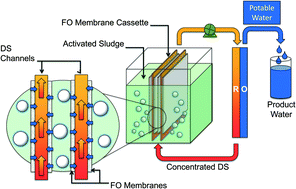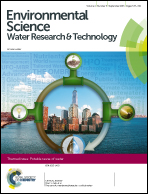The osmotic membrane bioreactor: a critical review
Abstract
The osmotic membrane bioreactor (OMBR) is a hybrid biological-physical treatment process that has been gaining interest for wastewater treatment and water reuse. The OMBR couples semi-permeable forward osmosis (FO) membranes for physiochemical separation with biological activated sludge process for organic matter and nutrient removal. The driving force for water production in OMBR is the osmotic pressure difference across the FO membrane between the activated sludge and a concentrated draw solution, which is made with inorganic or organic salts that have a high osmotic pressure at relatively low concentrations. The draw solution becomes diluted during OMBR treatment and may be reconcentrated using reverse osmosis, membrane distillation, or thermal distillation processes. The combination of processes in the OMBR presents unique opportunities but also challenges that must be addressed in order to achieve successful commercialization. These challenges include membrane fouling, elevated bioreactor salinity that hinders process performance, degradation of the draw solution by chemicals that diffuse through the FO membrane, and the potential for simultaneous water, mineral, and nutrient recovery. In this article, results from past and most recent OMBR studies are summarized and critically reviewed. Information about similar and more established technologies (e.g., traditional porous membrane bioreactors and FO) is included to help compare and contrast state-of-the-art technologies and the novel OMBR approach, and to elucidate practical configurations that should be considered in future OMBR research and development.

- This article is part of the themed collection: Potable Reuse of Water

 Please wait while we load your content...
Please wait while we load your content...